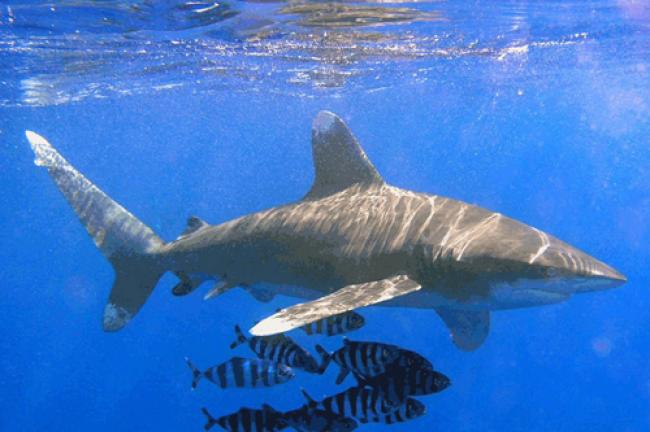Environment/Science
Biodiversity UN issues guide to make fisheries more sustainable
29 May 2014, 06:50 am Print

New York, May 29 (JEN): A new series of guides released on Wednesday by the United Nations Food and Agriculture Organization (FAO) will make it easier for fishers to identify deep-sea sharks, as well as improve reporting on catches and make deep-sea fisheries more sustainable.
Although they are not usually targeted, FAO pointed out that sharks and certain groups of sponges and cold-water corals can be impacted by boats trawling for fish in deep-sea fisheries. In most cases, the survival rate of these deep-sea bycatchspecies after being released back into the sea is low.
A lack of detailed information on deep-sea bycatch makes is difficult to understand the effects these fisheries are having on vulnerable marine ecosystems, the agency added.
“There is a large variety of weird and wonderful species down there that play an important role in deep-sea ecosystems,” said Johanne Fischer of FAO’s FishFinder Programme.
“But scientists and fishers alike can have trouble identifying them as there are few identification tools available. Instead theytend to lump species together as ‘deep-sea sharks’ when they report their catches.”
In general, catch reporting on cartilaginous fish – sharks, rays, skates and chimaeras, all of which have skeletons made of cartilage rather than bone – is poor compared to those on bony fish.
According to FAO, only 36 per cent of global cartilaginous fish catches were identified at species or genus level in 2011, compared to more than 75 per cent for bony fish.
“We need a clearer picture of what’s happening, and this is especially true for the deep seas,” said FAO Fishery Analyst Jessica Sanders.
“The new FAO deep-sea guides will help fishers provide more detailed information, and as a result countries will be in a better position to implement FAO’s International Guidelines for the Management of Deep-sea Fisheries in the High Seas, which set out recommendations for the conservation and management of vulnerable ecosystems.”
FAO is supporting the implementation of sustainable fisheries management practices outlined in the International Guidelines through a full-scale programme on deep-sea fisheries, which includes improving data reporting by developing identification guides and training programmes.
Deep seas are the largest habitat on earth, covering 53 per cent of the sea’s surface, and fishers have increasingly been exploiting their resources in recent decades, FAO noted, adding that the sustainable management of the world’s deep-sea fisheries is “complex.”
The first guide in the FAO series on deep-sea vulnerable species focuses on the Indian Ocean, one of the most diverse and poorly known regions with regard to deep-sea cartilaginous fish.
In total, the Indian Ocean is home to about 36 per cent of the world’s deep-sea cartilaginous species: 117 deep-sea sharks, 61 skates and rays, and 17 chimaeras – shark-like fish also known as ghost sharks.
Species include the half-metre-long cookiecutter shark, known for gouging cookie-cutter shaped mouthfuls out of larger animals, as well as the bignose shark, the false catshark and the deep-water stingray, all of which can grow to around threemetres.
The guide is laminated for use at sea and includes colour illustrations for the sharks most difficult to identify or most commonly caught, as well as entries for other species that are often misidentified, said FAO.
The series will eventually include sponges and corals and cover all of the world’s most important deep-sea fishing areas.
Photo: CITES
More Environment/Science
- Scientists are now planning to reintroduce Dodo, Mauritian Wildlife Foundation and US-based company sign partnership for project
- Kenya: 10 lions killed, conflict between human and wild animals increase
- Biodiversity and ecosystem protection highlighted on Mother Earth Day
- Australian govt lists Koalas as endangered species
- Rare coral reef discovered near Tahiti is ‘like a work of art’, says diver






